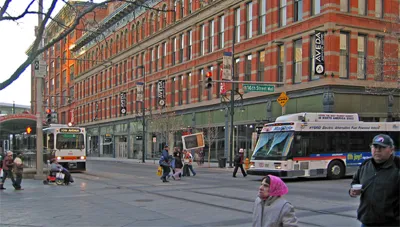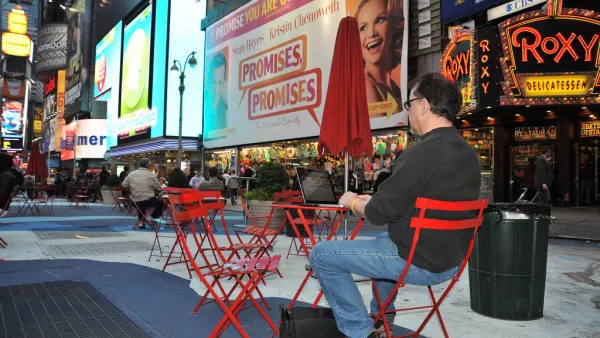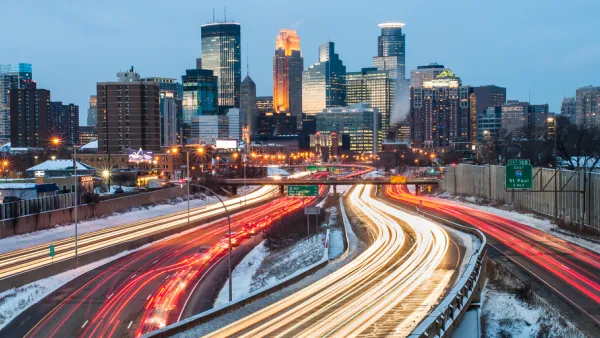Denver and Austin were finalists in the competition. Since then, they've found ways to implement their ideas.

78 cities applied to the Obama Administration's Smart Cities Challenge last year, proposing innovative uses of data, apps, and technology to improve transportation systems. Though Columbus, Ohio was the ultimate winner of $50 million in private and DOT dollars, Governing reports that many of the other cities are also moving forward on their ideas.
In Denver and Austin, just putting the submissions together "energized" city staff and fostered collaboration among people "who normally don't work side by side"—garnering a combination of other federal grants and public-private partnerships to support their plans. Austin is now creating a new regional center where "transportation officials from the city, state, toll roads, and transit agencies can coordinate their day-to-day operations with each other."
That kind of integration was an organizing principle in the Smart Cities Challenge, and for good reason: Coordination behind the scenes can lead to improved traffic and quicker solutions to problems on the ground.
“Ultimately, I don’t care if it’s a state engineer that hits the button that automatically gets more green time on city arterials, or if it’s a city traffic engineering saying, ‘There’s an accident over there on the freeway, so I better put up information signs up and down the freeway so that people know what to expect,” [Austin Transportation's Robert Spillar] said. “That seems simple, but I will tell you it’s like trying to jump over the Grand Canyon.”
FULL STORY: These Places Lost the Smart Cities Challenge. But They Say They Ended Up Ahead.

National Parks Layoffs Will Cause Communities to Lose Billions
Thousands of essential park workers were laid off this week, just before the busy spring break season.

Retro-silient?: America’s First “Eco-burb,” The Woodlands Turns 50
A master-planned community north of Houston offers lessons on green infrastructure and resilient design, but falls short of its founder’s lofty affordability and walkability goals.

Delivering for America Plan Will Downgrade Mail Service in at Least 49.5 Percent of Zip Codes
Republican and Democrat lawmakers criticize the plan for its disproportionate negative impact on rural communities.

Test News Post 1
This is a summary

Test News Headline 46
Test for the image on the front page.

Balancing Bombs and Butterflies: How the National Guard Protects a Rare Species
The National Guard at Fort Indiantown Gap uses GIS technology and land management strategies to balance military training with conservation efforts, ensuring the survival of the rare eastern regal fritillary butterfly.
Urban Design for Planners 1: Software Tools
This six-course series explores essential urban design concepts using open source software and equips planners with the tools they need to participate fully in the urban design process.
Planning for Universal Design
Learn the tools for implementing Universal Design in planning regulations.
EMC Planning Group, Inc.
Planetizen
Planetizen
Mpact (formerly Rail~Volution)
Great Falls Development Authority, Inc.
HUDs Office of Policy Development and Research
NYU Wagner Graduate School of Public Service





























